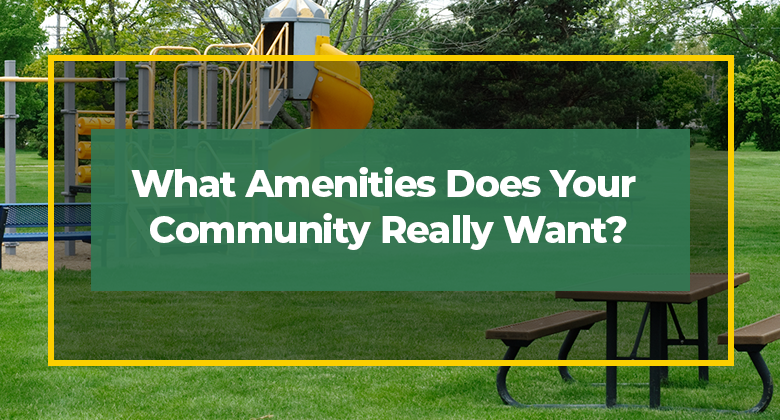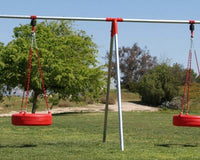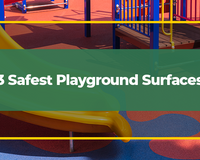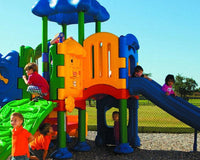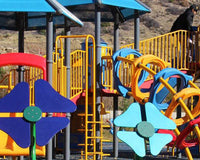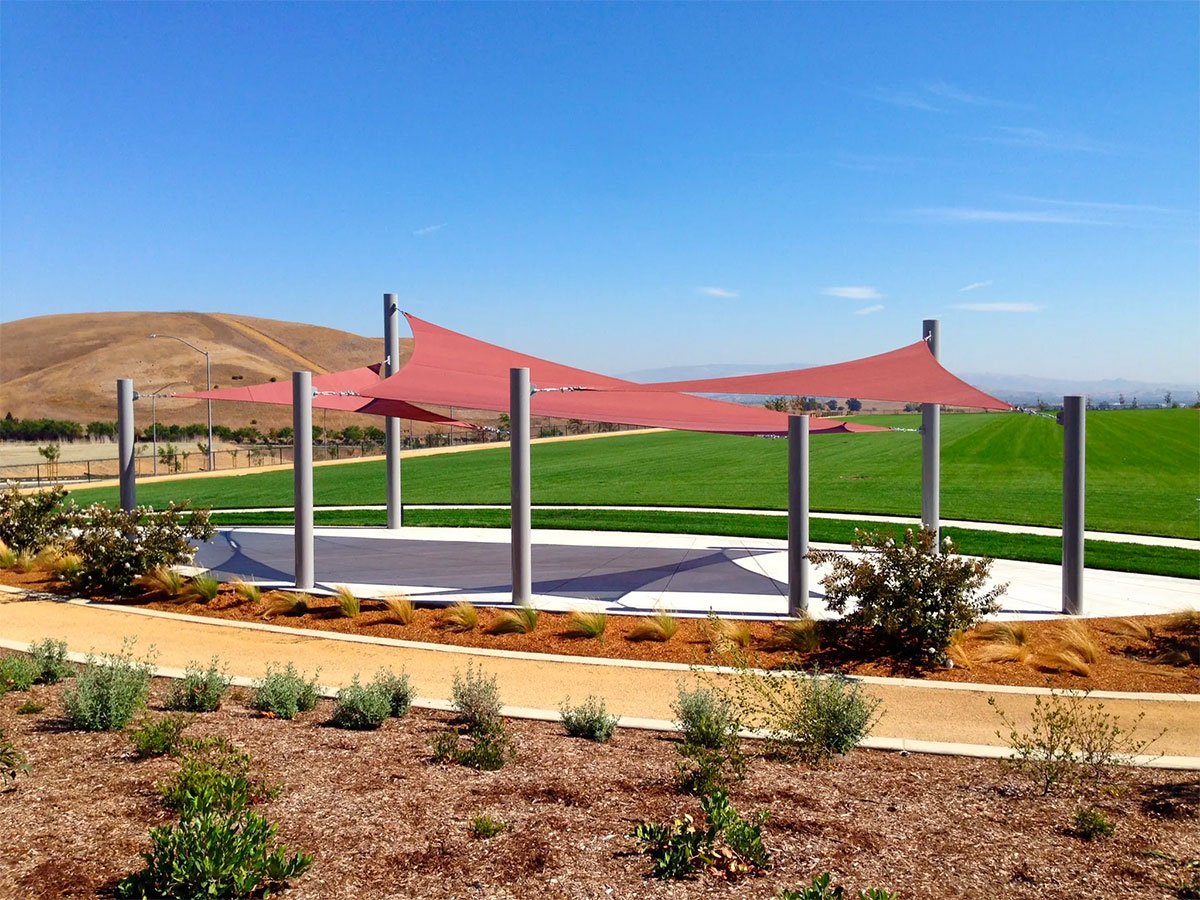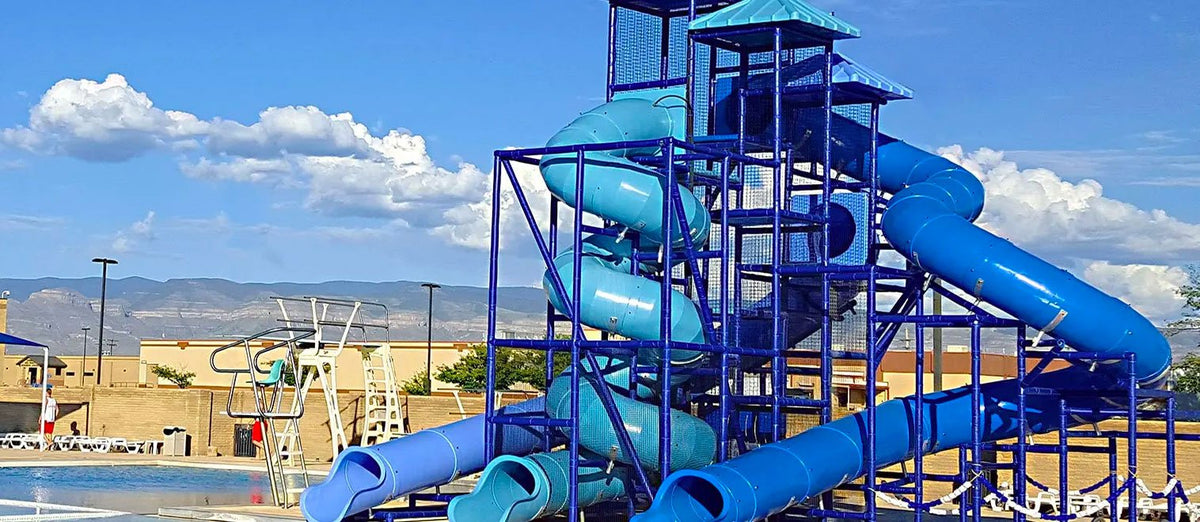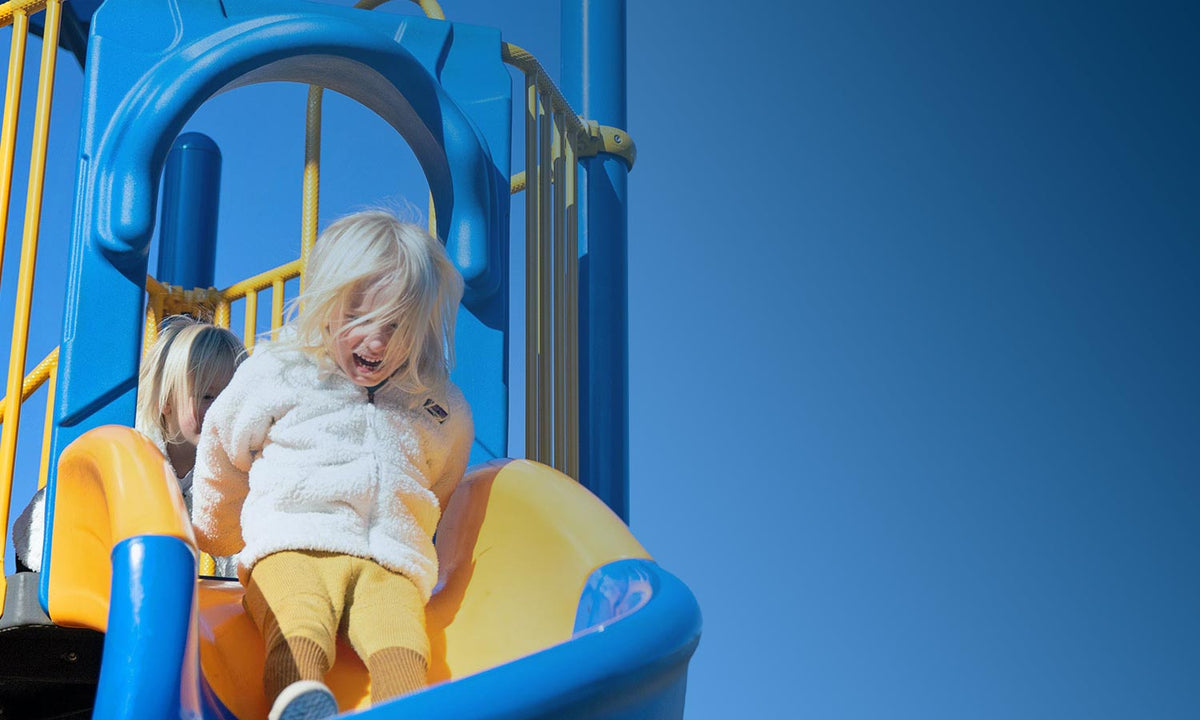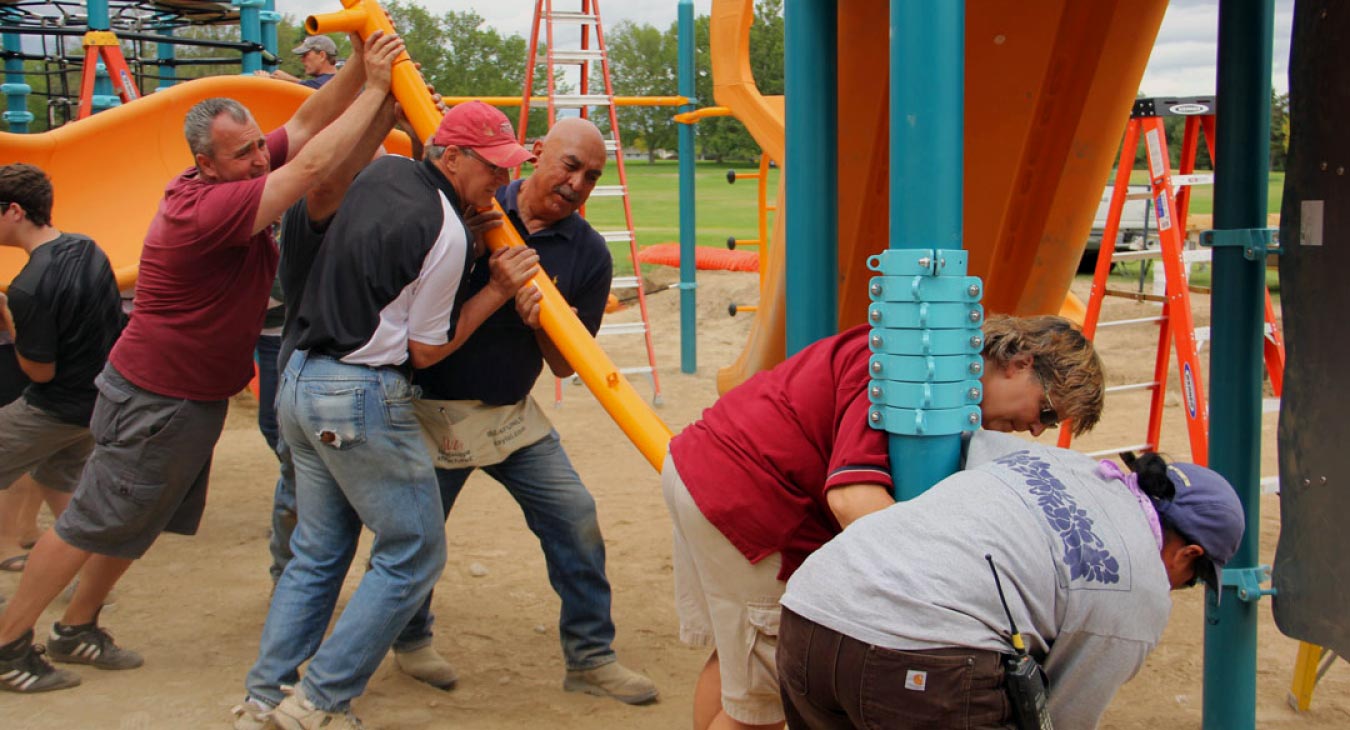What Park Amenities Does Your Community Need?
 Photo by Shane Teague on Unsplash
Photo by Shane Teague on Unsplash
Parks and playgrounds are the beating heart of any community, serving as sanctuaries of leisure where children laugh, families bond, and neighbors connect.
While the natural beauty of parks is undeniable, their potential can be elevated through the thoughtful incorporation of park amenities. These additions, carefully chosen and thoughtfully placed, can transform a simple park into a vibrant and thriving community hub. Intentional amenities can counter the effects of rising screen time among children by offering compelling, hands-on experiences that compete with devices.
In this article, we’ll be taking a deep dive into amenities’ pivotal role in enhancing the park and playground experience. We’ll explore not only the top park amenities but also those that stir the passions and desires of communities.
1. Inclusive Playground Equipment
In recent years, the concept of inclusivity in playgrounds has undergone a remarkable transformation, fostering unity, empathy, and growth in communities.
It’s no longer just about providing accessible ramps and swings but also about creating an environment where children of all abilities can play, learn, and grow together.
Inclusive playground equipment is at the forefront of this evolution. These innovative designs feature carefully crafted playground equipment to accommodate children with diverse physical and cognitive abilities.
One of the most significant advantages of inclusive play spaces and park accessories is the sense of belonging they foster.
When kids of varying abilities interact on the playground, they develop empathy and understanding, breaking down barriers and stereotypes. Inclusive playgrounds promote social integration and the notion that every child deserves the same opportunities for fun and exploration.
Moreover, inclusive playground equipment can also be an educational tool. Many inclusive play structures incorporate sensory experiences, such as tactile panels and musical elements, stimulating cognitive development and creativity.
These features allow children to learn while they play, enhancing their sensory, motor, and cognitive skills. Inclusive playgrounds, therefore, serve as valuable educational and social spaces, fostering unity and growth in communities.
2. Shaded Areas and Gathering Seating

The importance of shaded areas and gathering seating within a community’s park system must be balanced. These spaces offer respite from the sun and the perfect setting for social interaction, bonding, and relaxation.
As families and friends gather under the shade, these areas become connection hubs, where stories are shared, friendships are forged, and memories are created.
Additionally, a shade structure provides a comfortable and safe area for kids to play board games or read, further enhancing the family-friendly atmosphere of the park.
In these shaded retreats, park benches under the cool canopy offer a serene escape for visitors seeking a quiet moment away from the sun.
Picnic spots with comfortable picnic tables and seating elevate the park experience, making outdoor meals and celebrations more convenient and enjoyable.
Furthermore, these shaded areas often serve as venues for community events, performances, and gatherings.
They offer a perfect stage for local artists, musicians, and performers, further enhancing the park’s role as a cultural and social focal point within the community. Shaded areas and gathering seating contribute significantly to the vibrant social fabric of a community.
3. Water Features
Water features in parks add a touch of magic and enchantment, captivating the hearts of both children and adults. Splash pads, fountains, and water play areas are particularly popular among kids during hot summer days, providing a refreshing escape from the sun’s relentless heat.
The sound of cascading water adds a soothing and therapeutic element to the park’s ambiance, creating a serene environment for relaxation.
Park benches placed near these water features allow visitors to comfortably enjoy the calming effects of the water, adding to the sensory experience of the park.
However, incorporating these features also requires careful consideration of safety and maintenance.
Features like splash pads must adhere to strict safety guidelines to ensure a safe environment for kids and adults. Routine maintenance is essential to keep these features functioning optimally and to preserve their attractiveness.
When planning water features, include picnic tables and seating areas. These park amenities create spaces for families to gather and enjoy picnics by the water’s edge, adding convenience and enhancing the overall park experience.
Of course, no splash zone is complete without a slippery twist of a thrilling water slide that turns an ordinary park visit into an unforgettable ride.
In essence, water features serve as more than just visual attractions. They’re central to fostering a sense of community and tranquility in park settings, embodying a harmonious blend of aesthetics, recreation, and relaxation.
4. Outdoor Fitness Stations

The growing emphasis on health and fitness in today’s society has increased the inclusion of outdoor fitness stations in park designs.
These stations are for individuals of all ages, making exercise accessible to everyone. They provide a range of sports equipment, from simple stretching apparatus to more advanced strength and cardio machines.
The strategic placement of outdoor activities near rest and seating areas is a deliberate choice to encourage physical activity, fostering healthier lifestyles and social bonds within communities.
Visitors can engage in outdoor exercise routines while enjoying the camaraderie of others. These fitness stations promote healthier lifestyles, allowing residents to prioritize their well-being in a natural and social setting.
Also, outdoor fitness stations often host fitness classes, yoga sessions, and group workouts, contributing to the sense of community health and well-being.
They serve as spaces where people can come together not only to improve their physical fitness but also to strengthen social bonds. This way, outdoor fitness stations become key venues for promoting holistic well-being and fostering community cohesion.
5. Dog-Friendly Areas
For many families, pets are cherished companions, and communities have recognized the importance of accommodating the needs of pet owners.
The demand for dog parks and pet-friendly spaces has surged, creating areas specifically designed to accommodate furry friends.
These dog-friendly areas offer a range of amenities to ensure the comfort and convenience of pets and their owners.
Waste disposal stations are a must, encouraging responsible pet ownership. Water fountains for dogs provide a refreshing drink after playtime, and picnic tables with comfortable seating allow pet owners to relax while their dogs socialize and exercise.
A remarkable benefit of dog-friendly areas is their role in fostering a sense of community among pet owners. These spaces become meeting points for like-minded individuals who share a love for their four-legged family members.
Friendships are formed, playdates are arranged, and the overall sense of community is strengthened through the common bond of pet ownership. As such, dog-friendly areas naturally evolved into hubs of social interaction and connection within communities.
6. Environmental Initiatives

In today’s environmentally conscious world, community parks have the unique opportunity to lead by example by embracing green practices in their design.
One of the most visible aspects of these initiatives is the placement of recycling bins throughout the park. Encouraging responsible waste disposal keeps the park clean and reinforces a culture of environmental responsibility within the community.
Eco-friendly features in park design extend beyond waste management. Many community parks incorporate environmentally conscious products and materials into their site amenities.
From benches made of recycled materials to solar-powered lighting, these sustainable choices demonstrate a commitment to minimizing the park’s environmental footprint.
Some parks go a step further, integrating eco-friendly landscaping and park amenities such as picnic tables made from recycled materials. Some also add native plants and rain gardens for natural stormwater management.
These practices not only contribute to the park’s aesthetic appeal but also promote sustainable land management within the community. Environmental initiatives in parks align with the global movement toward sustainability and environmental stewardship.
7. Music and Art
The infusion of music and art into park accessories and aesthetics can transform these outdoor spaces into vibrant hubs of culture and creativity.
Sculptures, murals, musical play elements, and creatively designed seating arrangements all contribute to enriching the park’s ambiance, celebrating culture, and inspiring unity through artistic expression.
Sculptures placed strategically throughout the park serve as both visual focal points and opportunities for reflection.
They can capture the spirit of the community, commemorate historical events, or simply add a touch of elegance to the surroundings.
Public art, such as murals and installations, infuses color, imagination, and local culture into the park’s landscape, transforming it into an open-air gallery that celebrates the community’s identity.
Musical play elements are a delightful addition that encourages creativity and interaction among park-goers.
These elements, often designed as xylophones or chimes, allow children and adults to explore music in an outdoor setting. They provide an opportunity for artistic expression and foster a sense of community as visitors come together to create harmonious melodies.
Creative seating arrangements, such as artistically designed benches and strategically placed picnic tables, add both functionality and beauty to the park. They create unique seating spaces where visitors can pause, reflect, and enjoy the artistic surroundings.
These seating areas encourage community members to connect with their creative side while nurturing a sense of unity and shared appreciation for art and culture. Music and art in community parks serve as catalysts for cultural enrichment and community cohesion.
Conclusion
Transforming a community’s park system into a vibrant, joyful, inclusive, and enriching space relies heavily on incorporating the right park accessories and site amenities.
If you’re considering revitalizing your community’s park or playground with these park amenities, don’t hesitate to reach out to WillyGoat.
With over two decades of experience in creating dynamic and engaging outdoor spaces, WillyGoat can help turn your vision into reality.
Building a community space that fosters connection, well-being, and joy for all is an achievable goal. Your community deserves nothing less, and we’re here to make it happen.


